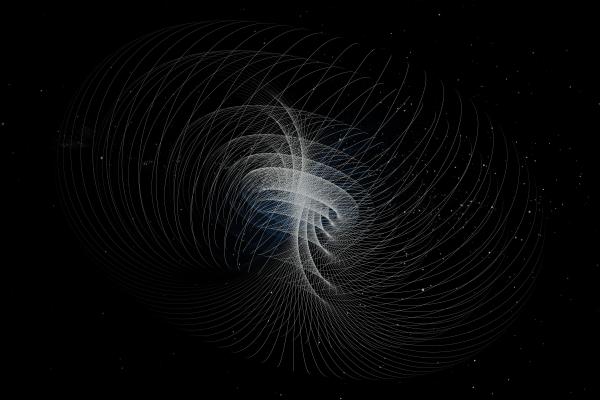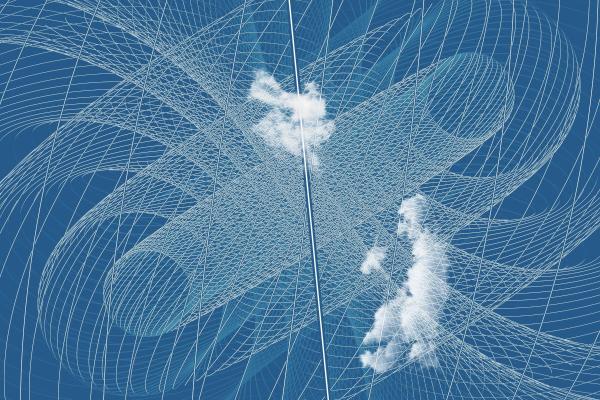BY LETTER
Heartland
Galactography > Sephirotic Empires > Communion of Worlds
Galactography > Regions of Space > Middle Regions/Hinter-regions
Galactography > Systems and Worlds > Systems & Worlds G - H
Galactography > Regions of Space > Middle Regions/Hinter-regions
Galactography > Systems and Worlds > Systems & Worlds G - H
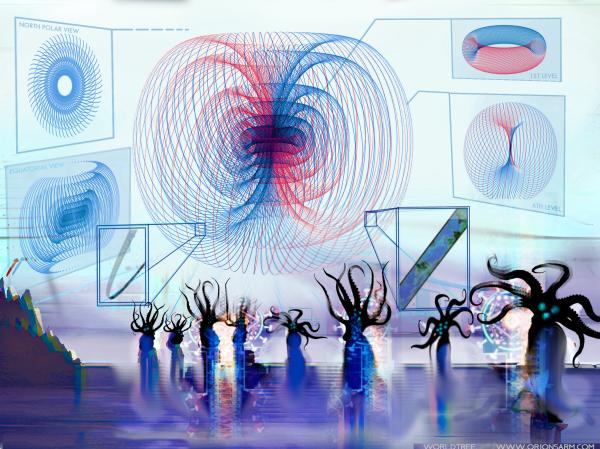 Image from Worldtree and Liam Jones | |
| Virtual beings living within the Heartland megastructure inspect maps of their home location in the matter-world. Interface Labels have been translated for the viewer. | |
System - Data Panel | |
| System | Heartland |
|---|---|
| Primary | None: The Heartland Megastructure is in interstellar space |
| Nearest star | HIP 2863, 1.3 light years |
| Distance from Sol | 334 light years |
| Constellation | Sculptor |
| Founded | 4312 AT |
| Archailect | While Heartland does contain a minor archailect node, the identity within is ambiguous, expressing traits of different ruling Sephirotic archailects at different times. |
| Allegiance | Communion of Worlds (Capital) |
| Population | Embodied S0: 2.3 trillion Virtual S0: 400 trillion S1: 9000 S2: around 120 |
| Travel | Wormhole: Traversable Wormhole to Relay 09 Beamlines: 13 Lightways: 41 |
| Hazard Rating | 0.0-4.0 (Individual chanceries set their own hazard rating. All locations with hazard rating >1 are clearly signposted.) |
| Visa Restrictions | None for Heartland as a whole, though some chanceries may have restrictions. |
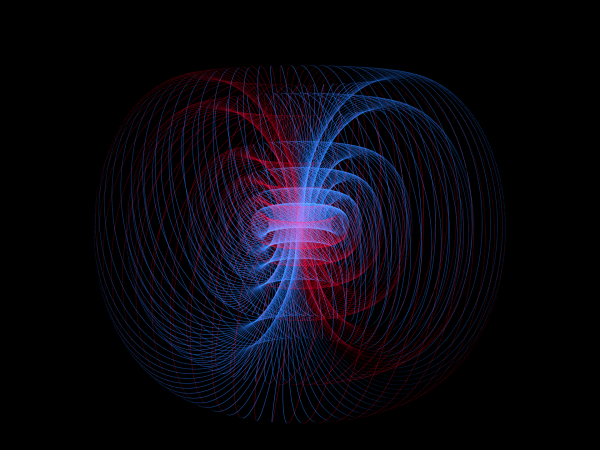 Image from Liam Jones | |
| During the celebrations of Commonwealth Day, all of Heartland was illuminated: The inner surfaces experiences full daylight, and the luminaires on the outer surfaces emitted Communion Red into space. | |
Megastructure - Data Panel | |
| Name | Heartland / Hopfia / The Orbital Rose / The Chanceries |
|---|---|
| Description | A set of 360 interlaced Banks orbitals arranged into six concentric tori, resembling a stereographic projection of the Hopf fibration. |
| Mass | 1.25 x 10^25kg (Approx. 2 x Earth mass) |
| Total surface area: | 2.25x10^13 km^2, or 44 142 x Earth surface area |
| Rotational period: | (every orbital) 32.5 hours |
| Width: | (every orbital) 3000 km |
| Level 1: | (Torus) Inner radius: 1 596 000 km Outer radius: 2 506 000 km (Constituent orbitals) Radius: 2 050 000 kmObliquity: 0.224 radians Tangential velocity: 110 km/s Centripetal acceleration: 0.6g |
| Level 2: | (Torus) Inner radius: 1 256 000 km Outer radius: 3 184 000 km (Constituent orbitals) Radius: 2 216 000 kmObliquity: 0.449 radians Tangential velocity: 119 km/s Centripetal acceleration: 0.65g |
| Level 3: | (Torus) Inner radius: 962 000 km Outer radius: 4 148 000 km (Constituent orbitals) Radius: 2 554 000 kmObliquity: 0.680 radians Tangential velocity: 137 km/s Centripetal acceleration: 0.75 g |
| Level 4: | (Torus) Inner radius: 700 000 km Outer radius: 5 712 000 km (Constituent orbitals) Radius: 3 208 000 kmObliquity: 0.898 radians Tangential velocity: 171 km/s Centripetal acceleration: 0.94 g |
| Level 5: | (Torus) Inner radius: 456 000 km Outer radius: 8 768 000 km (Constituent orbitals) Radius: 4 612 000 kmObliquity: 1.121 radians Tangential velocity: 247 km/s Centripetal acceleration: 1.35 g |
| Level 6: | (Torus) Inner radius: 226 000 km Outer radius: 10 326 000 km (Constituent orbitals) Radius: 5 276 000 kmObliquity: 1.343 radians Tangential velocity: 283 km/s Centripetal acceleration: 1.5 g |
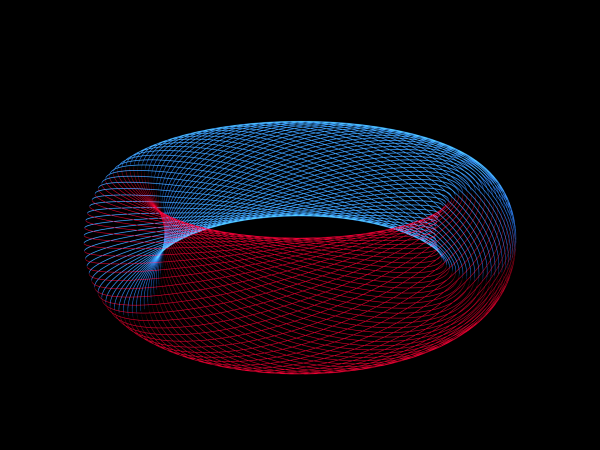 Image from Liam Jones | |
| The structure of Level One on Commonwealth Day colours. | |
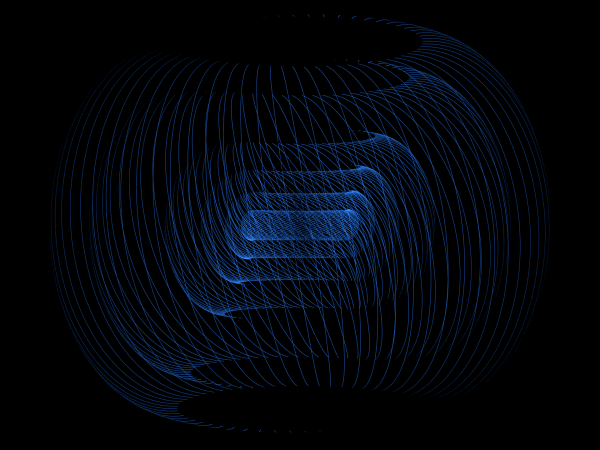 Image from Liam Jones | |
| Side view of the megastructure, with a clear demonstration that Heartland doesn't have reflective symmetry | |
Introduction
Heartland is the capital of the Communion of Worlds. It is not a system, but a megastructure in interstellar space, constructed from mass ferried across 1.3 lightyears from HIP 2863. Symbolically, this location represents the absolute neutrality of the Communion.Construction
Construction began in 4312 AT and finished in 4640. The timing, as many commentators have noticed, seems to have anticipated the Version War and the need for peacemaking at its end.The initial mass, comprising a little over half of Heartland's total, came from an uninhabited Stevensonian planet 1.3 lightyears away from HIP 2863. The remainder had to be ferried from HIP 2863 and a brown dwarf a further 2 lightyears away in an approximate line of sight.
Moving such a large quantity of mass over long distances is a significant engineering challenge. To achieve it, the Communion heated the part of the surface of both the star and brown dwarf with conversion reactors, and forced continual coronal mass ejections with magnetic fields. Smart dust mass beams shepherded the resulting mass flows to prevent divergence and ensure a correct trajectory. The resultant mass streams, travelling at 0.01c, reached their destination 130 and 200 years later.
The two mass streams collided at the destination, absorbing each other's momentum and releasing their kinetic energy to form a superheated plasma. This plasma served three purposes. First, it allowed nucleosynthesis of heavier elements to be used in Heartland's construction. Second, it powered its own containment field. Third, it powered high energy lasers, which emitted light over interstellar distances back to the source bodies, heating the surface and thereby reusing the energy.
Megastructure
The stereographic projection of the Hopf fibration is an important symbol in Communion culture. An infinite number of circles with different sizes and orientations, all woven together into a coherent whole without crossing, represents the Communion ideal of different viewpoints operating together harmoniously, forming a greater whole without losing their individual integrity.Heartland is the physical embodiment of this symbol: A system of 360 interlaced Banks orbitals, tracing out the paths of the Hopf fibration. The structure has six levels. On each level, 60 orbitals link (as Villaedeau circles) to form a torus. The result six tori are nested inside one another, with the smallest orbitals making up the innermost torus, and the largest orbitals making up the outermost.
Geometrically, the six levels map to six equally-spaced circles of latitude of the 2-sphere.
All the orbitals rotate with the same period, 32.5 hours. Therefore, the larger orbitals on the upper levels have higher centripetal acceleration.
In addition to the orbitals, Heartland has two further components. The first, Axis, is a column 600 kilometres thick and 10 million kilometres long, supported by mass streams, running through its centre. The second, Azimuth, is a hoop 600 kilometres inside the innermost torus. (Geometrically, Axis and Azimuth are degenerate tori corresponding to the the poles of the 2-sphere.)
Axis and Azimuth hold godtech computronium running an archailect node; a mass store of 10^21kg with conversion reactors, capable of powering Heartland for 10^8 years; industrial facilities; and embedded habitats.
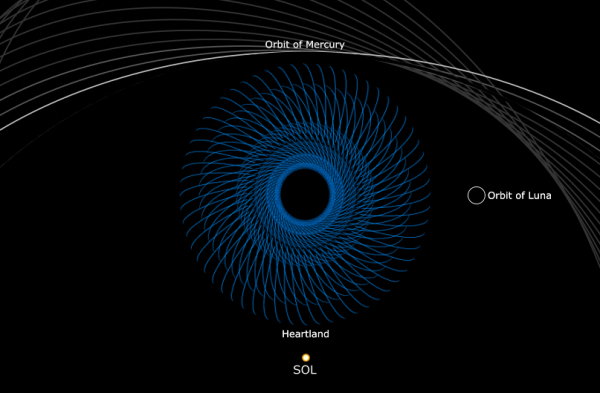 Image from Worldtree | |
| A comparison showing the scale of the Heartland Megastructure in relation to various astronomical bodies from Sol system | |
Lighting
Each orbital has a linear luminaire on its outer surface. Because of the intertwined structure of Heartland, it can illuminate orbitals on its own level, the level above, and the level below over the course of a full rotation.In normal operation, the luminaires focus all their light onto the surfaces of the orbitals to simulate a diurnal cycle. Viewed from space, they are invisible. By convention, the half of each orbital furthest from Axis is daylit. However, on special occasions, such as Conciliation Week, luminaires can emit light into space, and turn all of Heartland into day (or night).
For an observer on the surface during the day, the sun appears as a small patch of crosshatched lines in the sky, giving rise to complex shadows. During the night, the ringlight from the far side of Heartland appears as a complex grid covering the sky.
Gravity and Tides
Heartland has a total mass similar to that of a superterrestrial planet — 1.24 * 10^25 kg — and exerts a gravitational field. For observers on the surfaces of the orbitals, this effect is usually negligible due to three factors:(1) The distance from Heartland's centre of gravity is on the order of 10^5 — 10^6km.
(2) A fraction of the mass is further from the axis than a given point on the surface of an orbital, and arranged in a radially symmetric configuration, and therefore doesn't contribute.
(3) Much of the residual force is parallel to the centripetal acceleration and therefore only apparent as a small reduction in the surface acceleration.
However, on higher levels, the constituent orbitals are further from the centre of mass and have a larger obliquity, making gravitational effects more apparent. The resultant force manifests as "tides", where the surface of the orbital, over the course of a day, seems to tilt.
The landscape of orbitals on levels five and six reflect this. Large bodies of water usually come with high sides to keep them in place. Alternatively, two bodies of water can be linked by a river which changes direction over the course of a day. Mountain ranges disrupt the flow of large masses of air, the heat and humidity of the atmosphere is actively controlled to generate counteracting winds. Even so, the outer levels can have wind speeds in excess of 1000km/h and chains of cyclones 1200km across. Adventure sports are common. (The Negentropist Chancery has frozen the atmosphere of its level 5 and 6 orbitals as comment on the wastefulness of turbulence, opening the way for a different flavour of adventure sports.)
The effects of gravity also make Heartland unstable. Without active stabilisation, the constituent orbitals would drift towards the centre of gravity and collide.
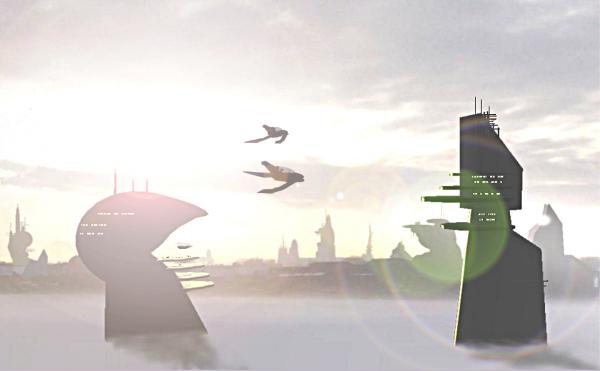 Image from Steve Bowers |
Society
It is sometimes said that the Communion of Worlds has almost absented itself from its own capital. The only parts of Heartland that are Communion territory are the Axis and the Azimuth. Communities of mediators live in small habitats embedded in the structures. However, even here the archailect presence demonstrates traits of other Sephirotic AI gods rather than Netzach.None of the 360 orbitals in Heartland are officially part of the Communion. Instead, they are under the control of other empires and institutions in the form of chanceries. These come in several types:
The Grand Chanceries each consist of six orbitals, one from each level. They represent the other fifteen Sephirotics plus other similarly-sized empires. Each of the Grand Chanceries is a microcosm of its empire. In the Solarian Chancery, six eternal parade-carnivals move between diamond pyramids. In the Cyberian Chancery, utility fog enacts virches at random. The Metasoft and Silicon Generation Chanceries are open to hard vacuum.
The Minor Chanceries are more numerous, and each consist of only a section of a single orbital. They represent smaller unaligned polities.
The Xeno Chanceries have one orbital each, and represent some xenosophont species.
The Recursive Domestic Chanceries represent the Communion member polities. They have no space of their own, but exist within the Grand and Minor chanceries. (For example, the Canberra Chancery is within the Solarian Grand Chancery, and in formal terms represents Canberra orbital to the Solar Dominion.)
The Myriad Headquarters, each holding a small segment of an orbital, belong to various interstellar organisations. Many are primarily active in the Communion, such as the Association of Mediators, the Association of Peer Mediator Counsellors, The Arbitration Institute, and Conciliators' Alliance. Others have wider scope: Headquarters for the Communion branches of Universal Rescue, the HIE, and the IPP are also present.
Administering an orbital also means controlling its mass beam reflectors. This system makes an important point: The survival of Heartland relies on the co-operation of every chancery. If any orbital fails to use its reflectors, it would move out of alignment and cause a collision and catastrophic collapse.
Many commentators believe this threat is purely symbolic, and that if an orbital's controllers did misuse the mass beam reflectors, the local archailect would take direct control to prevent disaster. This theory has yet to be tested.
Related Articles
Appears in Topics
Development Notes
Text by Liam Jones
Additional material by Steve Bowers
Initially published on 07 December 2023.
Expanded from a short article by M. Alan Kazlev with additional data by Steve Bowers, 07 November 2001
Additional material by Steve Bowers
Initially published on 07 December 2023.
Expanded from a short article by M. Alan Kazlev with additional data by Steve Bowers, 07 November 2001
